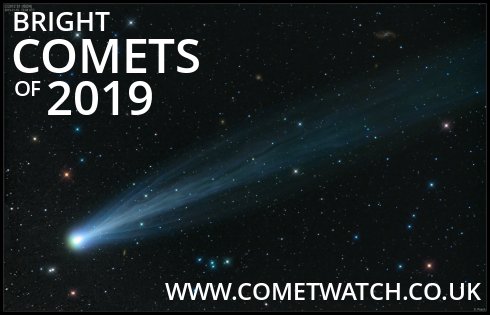
Comet 46P/Wirtanen
2019 starts off with a pleasing visitor from 2018, namely comet 46P/Wirtanen which reached perihelion, closest approach (and naked eye visibility) in December. The comet will continue to through January visible to the naked eye in Camelopardalis before moving in to Ursa Major by which time the comet may no longer visible to the naked eye. It will will continue to be a binocular object and remain well placed through February in to March for northern hemisphere observers as the small icy rock fades further.
From there on in, unfortunately the “bright comet drought” of 2019 begins…
Comet 2018 W2 (Africano)
Through the Autumn of 2019 Comet 2018 W2 is expected to break the magnitude 10 barrier and peak at magnitude 9 around perihelion on 06th September. Not exceptionally bright by any stretch of the imagination, however the comet will be well placed for northern hemisphere observers in the evening skies. This comet will likely be more enticing for photographers than visual observers given the brightness.
2017 T2 (PanSTARRS)
Towards the end of 2019, this comet is predicted to possibly reach magnitude 10. 2017 T2 PanSTARRS will be well placed for northern hemisphere observers moving from Auriga in to Perseus. This comet will not reach perihelion until 04 May, 2020.
In summary, 2019 is a disappointing year for bright comet observing however as most comet watchers well know, some of the best comets are the unexpected ones. Always keep checking Cometwatch for news of nay newcomers to the inner solar system!
